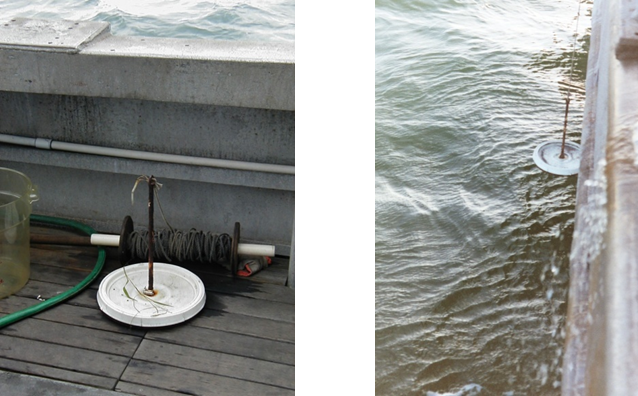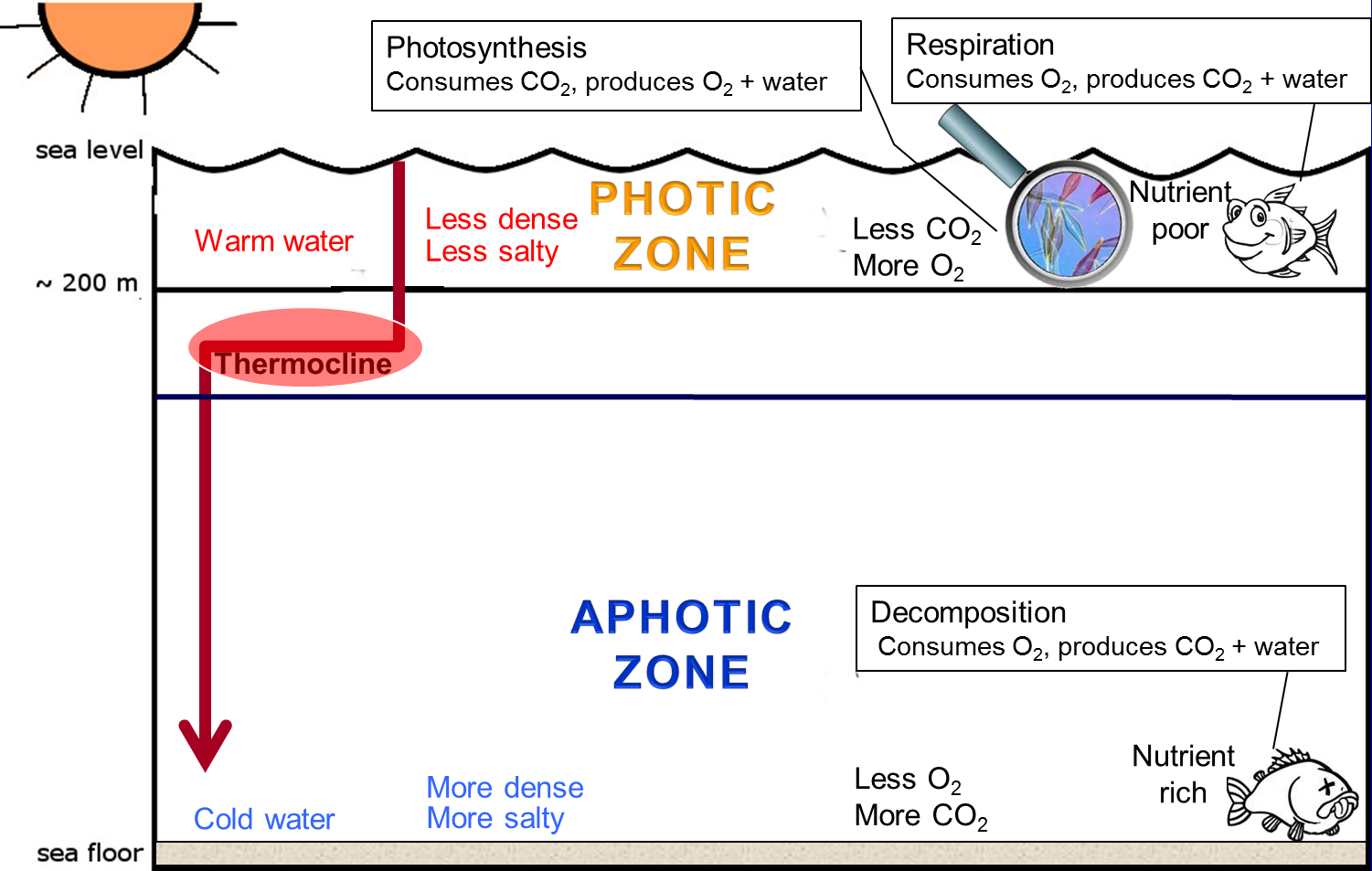Properties of Seawater: Light Penetration
Sunlight does not travel well in the ocean as scattering and absorption weaken the light. Scattering occurs when light is bounced between air and water molecules, dust and other objects. Absorption occurs when light’s electromagnetic energy is converted to heat in the molecules of seawater.
There are many factors that influence light penetration
- Turbidity - this term refers to how cloudy the water is. There are many reasons for this: pollution, lots of plankton or algae, lots of items (fish, boats, etc) moving through the water, and so on. The cloudier - or turbid - the water, the harder it is for the light to pass through it.
- Clouds - Think back to the last sunny day. What happened to the light when a cloud passed in front of the sun? It got a bit darker, right? That is because the cloud blocked the light from reaching you. The same thing happens on a larger scale when the day is cloudy, stormy or just overcast. The sunlight is blocked by the clouds, so less light reaches the ocean's surface. And the less light that reaches the ocean's surface, the less will penetrate downward.
- Angle of the Sun - When the sun is high in the sky - like when it's noon or in summer time - the sun's rays hit the ocean's surface more directly, so more light enters the ocean. When the sun is low in the sky - during the early morning or late afternoon, or during winter - the light hits the ocean surface more obliquely, so less light enters the water. How long the sun is in the sky matters, too. During the winter there are less hours of daylight, so less light is available. During the summer, however, the hours of daylight are longer, so more light is available.
- Plankton - Plankton can both scatter and absorb light. Microplankton like diatoms are so small that they can reflect or refract (scatter) the light off their bodies, sort of like a disco ball bounces light around. Phytoplankton (plants) can also absorb light's electromagnetic energy when they do photosynthesis.
- Pollution - Pollution can affect the light's ability to penetrate in teo ways: it can block the light from passing through, and it can scatter the light and send it in different directions.
The productivity of a region is limited by the available sunlight & nutrient supply.
Winter |
Spring |
Summer |
Fall |
|
Productivity |
Low |
High (spring bloom) |
Low |
High |
Nutrient levels |
Highest |
Decreasing |
Lowest |
Increasing |
Sunlight |
Lowest |
Increasing |
Highest |
Decreasing |
Visible light may penetrate down to a depth of ~200 meters (average depth is ~100 m)
- 60% of light is absorbed in the first meter
- 80% of light is absorbed after 10 meters
- At a depth of 150 meters, only 1% of visible light is left

Two Major Types of Water Zonations
- Based on the position of water over the sea floor (benthic and oceanic)
- Based on light penetration in the sea (Photic and Aphotic)

Zones based on light penetration in the sea
The oceanic zones include: Zones According to Light Penetration Photic Zone - where the light is! This zone is broken into to subzones: Euphotic zone The upper layer of the photic zone in which net photosynthetic gain occurs. This zone extends down to 70 m (230 ft) in mid-latitudes and is less than 1% of ocean volume. Nearly all marine life dependant upon this layer. Disphotic zone Light is present, but not enough for photosynthesis. This zone extends down to 600m (2000 ft). Below this is the true aphotic zone The Importance of the Photic Zone Light Measuring Devises Beam Transmissometer Own light source and receiver; directional light Measures Clarity Irradiance Meter or Photometer Secchi Disk Simple, easy, cheap means of assessing water clarity Let's look at our ocean layers so far: The surface zone is the Photic zone, which is warm, less salty, less dense, less nutrients, less CO2, and more O2. Separating the two layers is the mixed zone, where the thermocline, halocline and pycnocline are located. The deep zone is the Aphotic zone, which is cold, more salty, more dense, more nutrients, more CO2, and less O2.


Omni-directional light
Ambient light from the surface

